Spin designers with nanomagnets
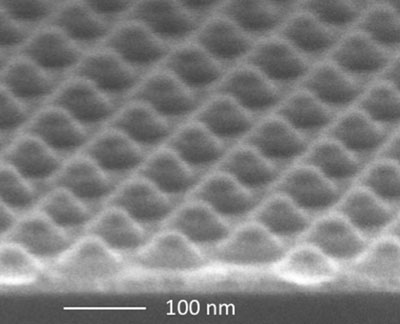 Researchers are studying how the spin of electrons on nanomagnets could be manipulated to create faster, more energy-efficient computers.
Researchers are studying how the spin of electrons on nanomagnets could be manipulated to create faster, more energy-efficient computers.
Jan 8th, 2015
Read more
 Researchers are studying how the spin of electrons on nanomagnets could be manipulated to create faster, more energy-efficient computers.
Researchers are studying how the spin of electrons on nanomagnets could be manipulated to create faster, more energy-efficient computers.
Jan 8th, 2015
Read more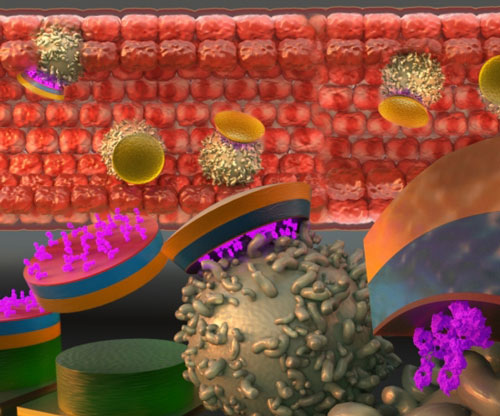 By taking advantage of natural body processes, researchers at UC Santa Barbara and MIT have developed a method of targeting inflamed tissues, creating a way to treat both the inflammation and its underlying cause.
By taking advantage of natural body processes, researchers at UC Santa Barbara and MIT have developed a method of targeting inflamed tissues, creating a way to treat both the inflammation and its underlying cause.
Jan 7th, 2015
Read more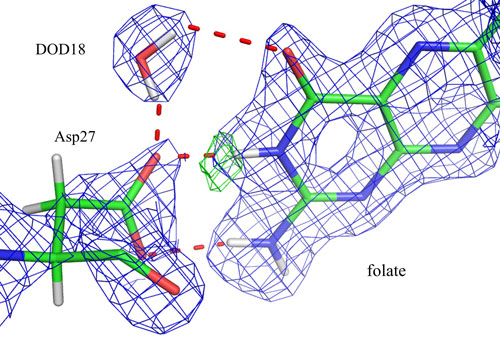 Using neutron crystallography, a team of researchers unequivocally mapped the active site of the enzyme dihydrofolate reductase (DHFR), an enzyme necessary for nucleotide biosynthesis and a classical drug target.
Using neutron crystallography, a team of researchers unequivocally mapped the active site of the enzyme dihydrofolate reductase (DHFR), an enzyme necessary for nucleotide biosynthesis and a classical drug target.
Jan 7th, 2015
Read moreThe work reveals that a particle's surface charge plays a key role in eliciting immune responses in the lung.
Jan 7th, 2015
Read more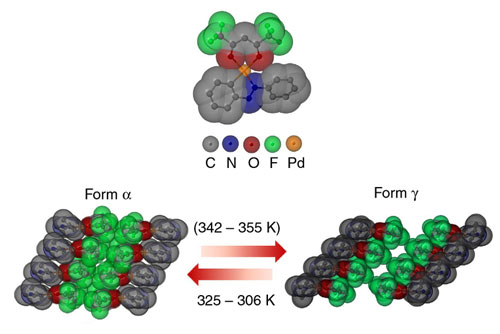 Insights into structural transformations explain why mechanical tension causes some crystals to jump, while others crumble.
Insights into structural transformations explain why mechanical tension causes some crystals to jump, while others crumble.
Jan 7th, 2015
Read more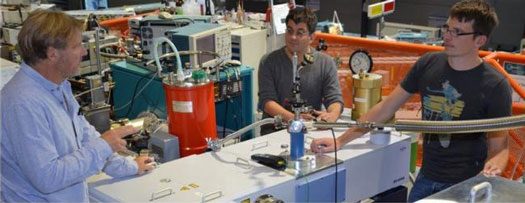 Researchers derived a new set of equations that allows for calculating electron paramagnetic resonance (EPR) transition probabilities with arbitrary alignment and polarization of the exciting electromagnetic radiation.
Researchers derived a new set of equations that allows for calculating electron paramagnetic resonance (EPR) transition probabilities with arbitrary alignment and polarization of the exciting electromagnetic radiation.
Jan 7th, 2015
Read more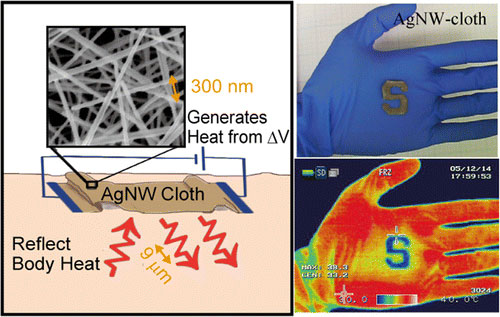 To stay warm when temperatures drop outside, we heat our indoor spaces - even when no one is in them. But scientists have now developed a novel nanowire coating for clothes that can both generate heat and trap the heat from our bodies better than regular clothes.
To stay warm when temperatures drop outside, we heat our indoor spaces - even when no one is in them. But scientists have now developed a novel nanowire coating for clothes that can both generate heat and trap the heat from our bodies better than regular clothes.
Jan 7th, 2015
Read more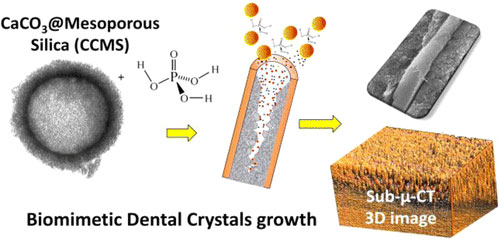 Rather than soothe and comfort, a hot cup of tea or cocoa can cause people with sensitive teeth a jolt of pain. But scientists are now developing a new biomaterial that can potentially rebuild worn enamel and reduce tooth sensitivity for an extended period.
Rather than soothe and comfort, a hot cup of tea or cocoa can cause people with sensitive teeth a jolt of pain. But scientists are now developing a new biomaterial that can potentially rebuild worn enamel and reduce tooth sensitivity for an extended period.
Jan 7th, 2015
Read more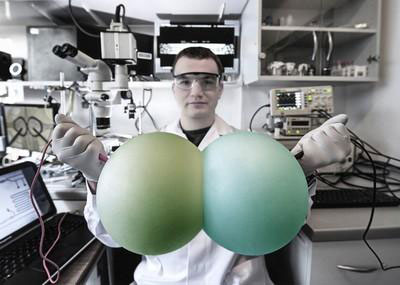 Life processes depend fundamentally on phenomena occurring on the membranes separating cells from their environment. Hitherto poorly understood, the mechanisms responsible for transport through the cell membrane will be able to be studied faster and more cheaply - thanks to a new microfluidic system. The system enables the serial formation of cell membranes and measurement of the processes taking place on them.
Life processes depend fundamentally on phenomena occurring on the membranes separating cells from their environment. Hitherto poorly understood, the mechanisms responsible for transport through the cell membrane will be able to be studied faster and more cheaply - thanks to a new microfluidic system. The system enables the serial formation of cell membranes and measurement of the processes taking place on them.
Jan 7th, 2015
Read more In the development of new drugs, taking something from nature and modifying it has been a successful tactic employed by medicinal chemists for years. Now, with the help of nanotechnology, researchers are turning once-discarded drug candidates into usable drugs.
In the development of new drugs, taking something from nature and modifying it has been a successful tactic employed by medicinal chemists for years. Now, with the help of nanotechnology, researchers are turning once-discarded drug candidates into usable drugs.
Jan 7th, 2015
Read moreThe National Nanotechnology Coordination Office (NNCO) will hold a series of webinars focusing on the experiences, successes, and challenges for small- and medium-sized businesses working in nanotechnology and on issues of interest to the business community.
Jan 7th, 2015
Read more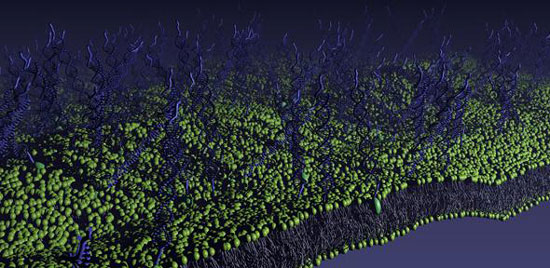 A new responsive material 'glued' together with short strands of DNA, and capable of translating thermal and chemical signals into visible physical changes, could underpin a new class of biosensors or drug delivery systems.
A new responsive material 'glued' together with short strands of DNA, and capable of translating thermal and chemical signals into visible physical changes, could underpin a new class of biosensors or drug delivery systems.
Jan 7th, 2015
Read more Geometrical light trapping is a simple and promising strategy to largely improve the optical absorption and efficiency of solar cells. Nonetheless, implementation of geometrical light trapping in organic photovoltaic (OPV) is challenging due to the fact that uniform organic active layer can rarely be achieved on textured substrate. Researchers have now reported novel nanobowl optical concentrator fabricated on low-cost aluminum foil and aiming at tackling this problem.
Geometrical light trapping is a simple and promising strategy to largely improve the optical absorption and efficiency of solar cells. Nonetheless, implementation of geometrical light trapping in organic photovoltaic (OPV) is challenging due to the fact that uniform organic active layer can rarely be achieved on textured substrate. Researchers have now reported novel nanobowl optical concentrator fabricated on low-cost aluminum foil and aiming at tackling this problem.
Jan 7th, 2015
Read more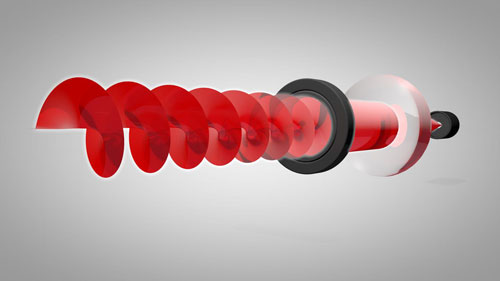 A team of engineers has developed a new acousto-optic device that can shape and steer beams of light at speeds never before achieved. The new technology will enable better optical devices to be made, such as holographs that can move rapidly in real time.
A team of engineers has developed a new acousto-optic device that can shape and steer beams of light at speeds never before achieved. The new technology will enable better optical devices to be made, such as holographs that can move rapidly in real time.
Jan 6th, 2015
Read more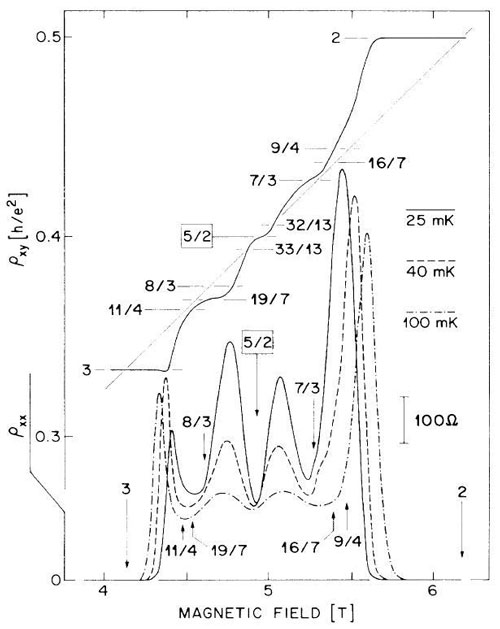 Many theoretical and experimental efforts continue in the field of the FQHE. Scientists at Peking University's International Center for Quantum Materials outline previous research and recent discoveries and technical developments in the field in a new paper.
Many theoretical and experimental efforts continue in the field of the FQHE. Scientists at Peking University's International Center for Quantum Materials outline previous research and recent discoveries and technical developments in the field in a new paper.
Jan 6th, 2015
Read more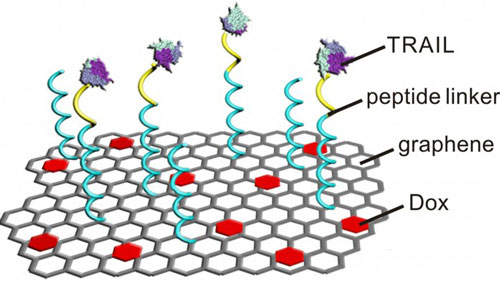 An international team of researchers has developed a drug delivery technique that utilizes graphene strips as 'flying carpets' to deliver two anticancer drugs sequentially to cancer cells, with each drug targeting the distinct part of the cell where it will be most effective. The technique was found to perform better than either drug in isolation when tested in a mouse model targeting a human lung cancer tumor.
An international team of researchers has developed a drug delivery technique that utilizes graphene strips as 'flying carpets' to deliver two anticancer drugs sequentially to cancer cells, with each drug targeting the distinct part of the cell where it will be most effective. The technique was found to perform better than either drug in isolation when tested in a mouse model targeting a human lung cancer tumor.
Jan 6th, 2015
Read more